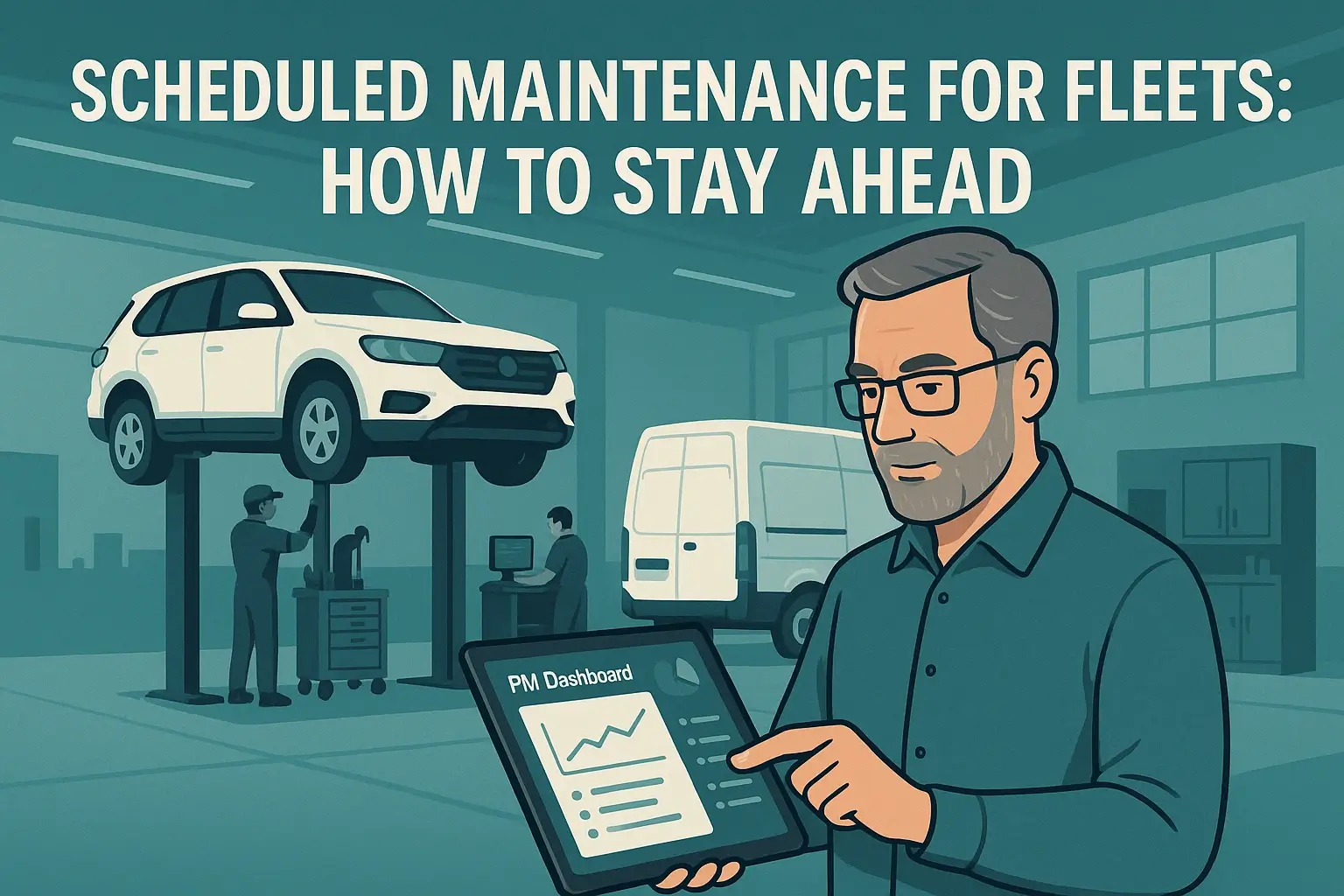Key Takeaways
Owning and managing a small fleet can be a substantial challenge, requiring a careful balance between efficiency, cost, and safety. Implementing proven fleet management practices is important for small business owners who want to optimize their operations. Here are some strategic approaches to help you enhance your fleet management, improve operational efficiency, and reduce overhead costs.
Top Fleet Management Practices for Small Businesses
Develop a Strategic Long-Term Fleet Management Plan
Crafting a strategic long-term plan for your fleet is the first step towards sustainable growth and scalability. This strategy should focus on the future needs of your business, including fleet expansion, budget adjustments, implementing online fleet management systems, and integration of new technologies. Simplifying your strategic approach will help you adapt more readily as your business grows.
Regular Vehicle Replacement to Maintain Fleet Efficiency
Regularly updating your fleet is critical to maintaining operational efficiency. Vehicles generally start losing their optimal performance after reaching 70,000 miles. It is advisable to plan for vehicle replacements every three to four years to avoid escalating maintenance costs and to keep your fleet modern and efficient.
Maximize Asset Utilization
Surprisingly, about 42% of fleet assets are underutilized, engaging in productive tasks only 5% of the time. Assessing how frequently each vehicle in your fleet is used can uncover cost-saving opportunities and help optimize asset utilization. Ensuring that each vehicle is adequately utilized can significantly cut down on operational costs.
Focus on Preventive Maintenance
Prioritizing preventive maintenance is essential for reducing the likelihood of costly repairs and vehicle downtime. Such a focus not only ensures that vehicles are always in prime condition but also helps in adhering to compliance standards like DOT inspections. Implementing a thorough preventive maintenance program will extend the lifespan of your fleet and enhance safety.
Encourage and Monitor Safe Driving Practices
Safe driving practices are important for reducing costs related to collisions and maintenance. Implementing telematics systems can help monitor and improve driver behaviors such as speeding, harsh braking, and quick acceleration. Training programs and incentives for safe driving can reduce accident-related expenses by 20-35%, according to the Network of Employers for Traffic Safety.
Implement Geofencing for Enhanced Fleet Security
Geofencing technology is an excellent tool for creating virtual boundaries around specified locations. This technology can alert you when vehicles enter or leave these boundaries, offering a way to monitor vehicle usage and ensure security, particularly after hours.
Establish Comprehensive Company Fleet Policies
Creating and enforcing a detailed company policy regarding fleet management can streamline operations and reduce liabilities. Such policies should cover aspects of maintenance, driver conduct, safety protocols, and emergency handling. Ensuring that all employees are aware of and adhere to these policies is critical for operational consistency and safety.
Utilize Telematics for Real-Time Fleet Monitoring
Telematics technology plays a vital role in modern fleet management by providing real-time data on every aspect of fleet operations. This data includes vehicle tracking, fuel usage, maintenance needs, and driver behavior analytics. Insights gained from telematics can lead to significant improvements in managing your fleet more effectively.
Optimize Driving Routes for Maximum Efficiency
Using data from your telematics system, analyze and optimize your fleet routes. Route optimization not only saves fuel but also ensures timely deliveries and better customer service. Factors such as traffic patterns, road conditions, and weather should be considered to determine the most efficient routes.
Right-Size Your Fleet According to Business Needs
Analyzing usage data helps in determining whether your fleet size matches the current business demand. This process, known as rightsizing, involves adjusting the fleet size to improve vehicle utilization, reduce maintenance costs, and align with your business's operational needs.
Establish a Regular Maintenance Schedule
Setting up a regular maintenance schedule for your fleet can prevent unexpected breakdowns and extend vehicle life. This should include routine checks and servicing as dictated by mileage or usage patterns, tracked via telematics.
Download Your Free Vehicle Maintenance Checklist
Minimize Vehicle Idling to Save Fuel
Reducing idling time can lead to significant savings in fuel costs. The Environmental Protection Agency (EPA) suggests that eliminating just five minutes of idling per day can save over $100 per vehicle annually. Educating your drivers about the costs associated with idling and enforcing policies to minimize it can contribute to these savings.
Strategically Manage Fuel Purchases
Since fuel is a major operating expense for any fleet, managing its cost is important. Encourage drivers to fuel up at stations offering the best prices and consider negotiating bulk rates with fuel providers. Regularly monitoring fuel efficiency through telematics can also help identify potential issues with vehicle engines.
Analyze and Act on Accident Data
Regularly review accident reports to identify common trends and problem areas. This analysis can inform your training and preventive strategies, aiming to reduce future incidents. Additionally, monitoring driver behavior through telematics can help pinpoint risky driving habits that contribute to accidents.
Create a Comprehensive Fleet Safety Program
Develop a fleet safety program that includes mandatory defensive driving courses, regular vehicle inspections, and strict adherence to safety policies. Regular training and strict policy enforcement can significantly reduce the likelihood of accidents and improve overall fleet safety.
Ready to Take Control of Your Fleet Management?
By adopting these best practices, small business owners can achieve greater control over their fleet operations, leading to reduced costs, improved safety, and enhanced service delivery.
With Simply Fleet's fleet management system, you can streamline operations, reduce costs, and improve safety across your entire fleet. Our intuitive platform offers real-time tracking, preventive maintenance alerts, fuel management, and comprehensive analytics to help you make smarter decisions. Choose Simply Fleet today and experience the efficiency of optimized fleet operations. Manage your fleets more effectively—start with Simply Fleet's software now!



.png)








.png)


.png)





.webp)



